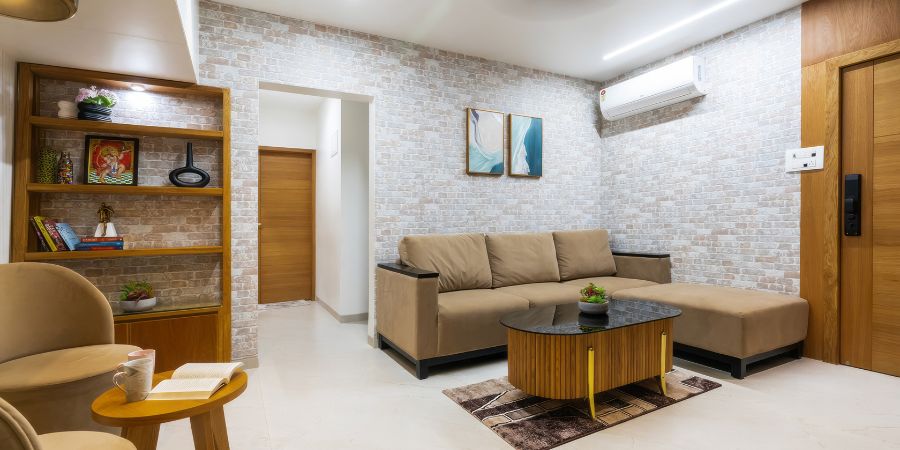High competition in Dubai’s rental market makes it essential to adopt strategies that keep properties occupied year-round. Location alone does not guarantee success—pricing, presentation, and ongoing tenant satisfaction all play a vital role. The most effective way to maximize occupancy rates is to combine competitive pricing with strong marketing and consistent property upkeep.
Successful landlords in Dubai focus on more than just attracting tenants; they prioritize retention by offering well-maintained homes, responsive service, and amenities that match tenant expectations. Data-driven pricing adjustments, tailored marketing campaigns, and professional Dubai rental property management services help ensure steady demand, even during slower seasons.
By applying proven strategies that balance market trends with tenant needs, property owners can secure higher occupancy and stable returns in a constantly shifting environment. A practical approach ensures long-term success without relying on guesswork.
Key Takeaways
- Clear strategies keep properties filled consistently
- Marketing and service quality drive tenant retention
- Professional management supports long-term success
Core Strategies to Maximize Occupancy Rates in Dubai Rentals
Maximizing occupancy rates in Dubai property requires accurate market awareness, competitive pricing, and well-planned property improvements. Owners who align rental strategies with tenant expectations and market conditions can achieve more stable income and reduced vacancy periods.
Understanding Dubai Rental Market Dynamics
Dubai’s rental market shifts with tourism trends, business activity, and seasonal demand. Properties in areas like Downtown Dubai or Dubai Marina often see higher demand from short-term tenants, while suburban communities attract long-term residents. Tenant preferences vary between furnished short-term rentals and unfurnished long-term leases. Owners who understand these differences can better position their properties to attract the right audience.
Monitoring government regulations also matters. Dubai has specific rules for holiday homes and tenancy contracts, and compliance helps avoid penalties while maintaining trust with tenants. Market data from real estate portals and agencies provides insight into average rental rates, occupancy performance, and tenant demographics. Using this data allows landlords to anticipate demand shifts and adjust strategies proactively.
Optimizing Rental Pricing and Dynamic Rate Adjustments
Pricing directly influences occupancy rates. Setting rents too high can extend vacancy periods, while undervaluing a property reduces returns. A competitive analysis of similar properties in the same district helps identify a realistic baseline. Dynamic pricing tools can adjust rates based on demand fluctuations. For example, short-term rentals near Expo City or Palm Jumeirah may charge higher rates during peak tourism seasons, while lowering them during off-peak months to maintain occupancy. Leveraging Dubai rental property management solutions helps ensure rental rates stay competitive while balancing profitability and tenant expectations.
Owners should also consider offering flexible lease terms. Options such as monthly rentals or semi-furnished units can appeal to different tenant groups. This flexibility can reduce turnover and stabilize occupancy. Regular reviews of pricing performance are essential. Tracking occupancy trends against rental income ensures the property remains competitive without sacrificing profitability.
Enhancing Property Appeal Through Upgrades and Amenities
Well-maintained and upgraded properties attract tenants faster. Simple improvements like repainting walls, upgrading lighting, or adding energy-efficient appliances can significantly improve rental appeal. Amenities also play a major role in Dubai property demand. Features such as high-speed internet, modern kitchens, and smart home systems are increasingly valued by tenants. For short-term rentals, professional photography and well-furnished interiors can boost listing performance.
Shared facilities within residential buildings, such as gyms, pools, or concierge services, further influence occupancy rates. Properties in developments offering these amenities often achieve higher tenant retention. Landlords who invest in regular maintenance and periodic upgrades not only increase occupancy but also protect long-term asset value. A well-presented property remains competitive even in slower rental cycles.
Effective Marketing and Tenant Retention Approaches
Maximizing occupancy in Dubai rentals requires both visibility to prospective tenants and strategies that encourage them to stay longer. Landlords who balance modern marketing with tenant-focused management practices often see more stable rental income and reduced vacancy periods.
Leveraging Digital Real Estate Platforms
Digital platforms play a central role in connecting landlords with tenants in Dubai. Listings on Bayut, Property Finder, and Dubizzle often generate the highest inquiries, especially when paired with professional photos and accurate descriptions. Clear details about rent, amenities, and location help reduce wasted inquiries and attract serious tenants.
Social media channels such as Instagram and Facebook allow property owners to showcase lifestyle features. Highlighting nearby transport, schools, or leisure options makes a listing more appealing. Paid advertising on these platforms can also target specific groups, increasing visibility among those most likely to rent.
Search engine optimization (SEO) further improves reach. By optimizing listings with terms like Dubai property for rentor affordable apartments in Dubai Marina, landlords can drive more organic traffic to their properties. Consistency across platforms strengthens credibility and helps tenants trust the listing.
Targeting High-Demand Tenant Demographics
Understanding who rents most frequently in Dubai helps landlords tailor their approach. Young professionals often seek apartments near business hubs such as DIFC or Business Bay, while families prioritize larger units in suburban areas like Arabian Ranches or Mirdif.
Corporate tenants represent another valuable demographic. Companies often lease multiple units for staff housing, providing a reliable source of long-term rental income. Offering flexible lease terms or fully furnished apartments can make properties more attractive to this group.
Expats form a large share of Dubai’s rental market. Many prefer modern buildings with amenities such as gyms, pools, and parking. Highlighting these features in listings and ensuring they are well-maintained can help secure consistent demand from this segment.
Conclusion
Maximizing occupancy in Dubai rentals depends on a balance of competitive pricing, effective marketing, and property upkeep. Owners who adapt to seasonal demand shifts and use data-driven pricing tend to attract steady tenants. A mix of traditional methods, such as local advertising, and modern tools, like online platforms and dynamic pricing, creates stronger results. By aligning with tenant expectations and market conditions, landlords can achieve consistent occupancy and stable rental income.



